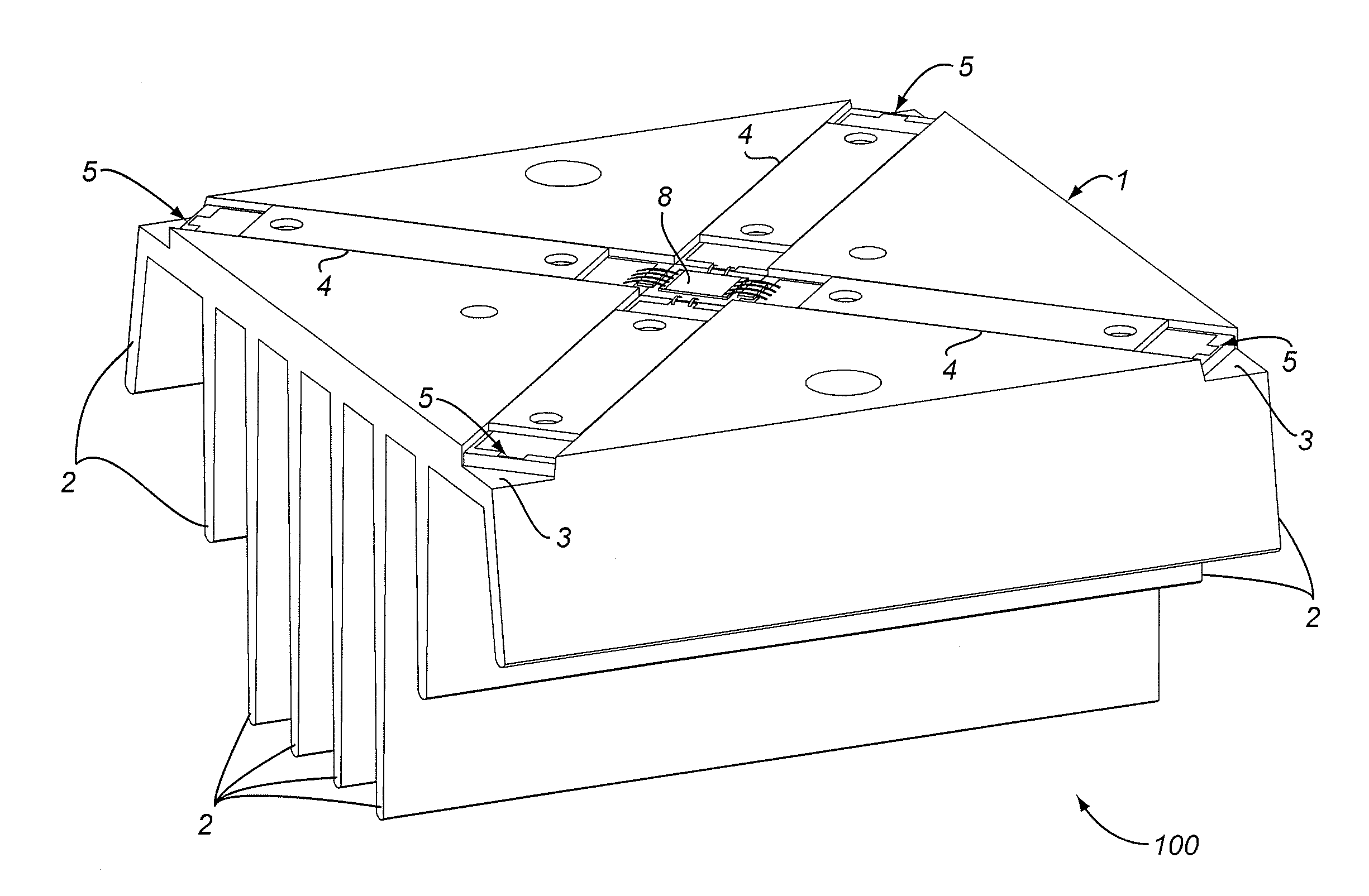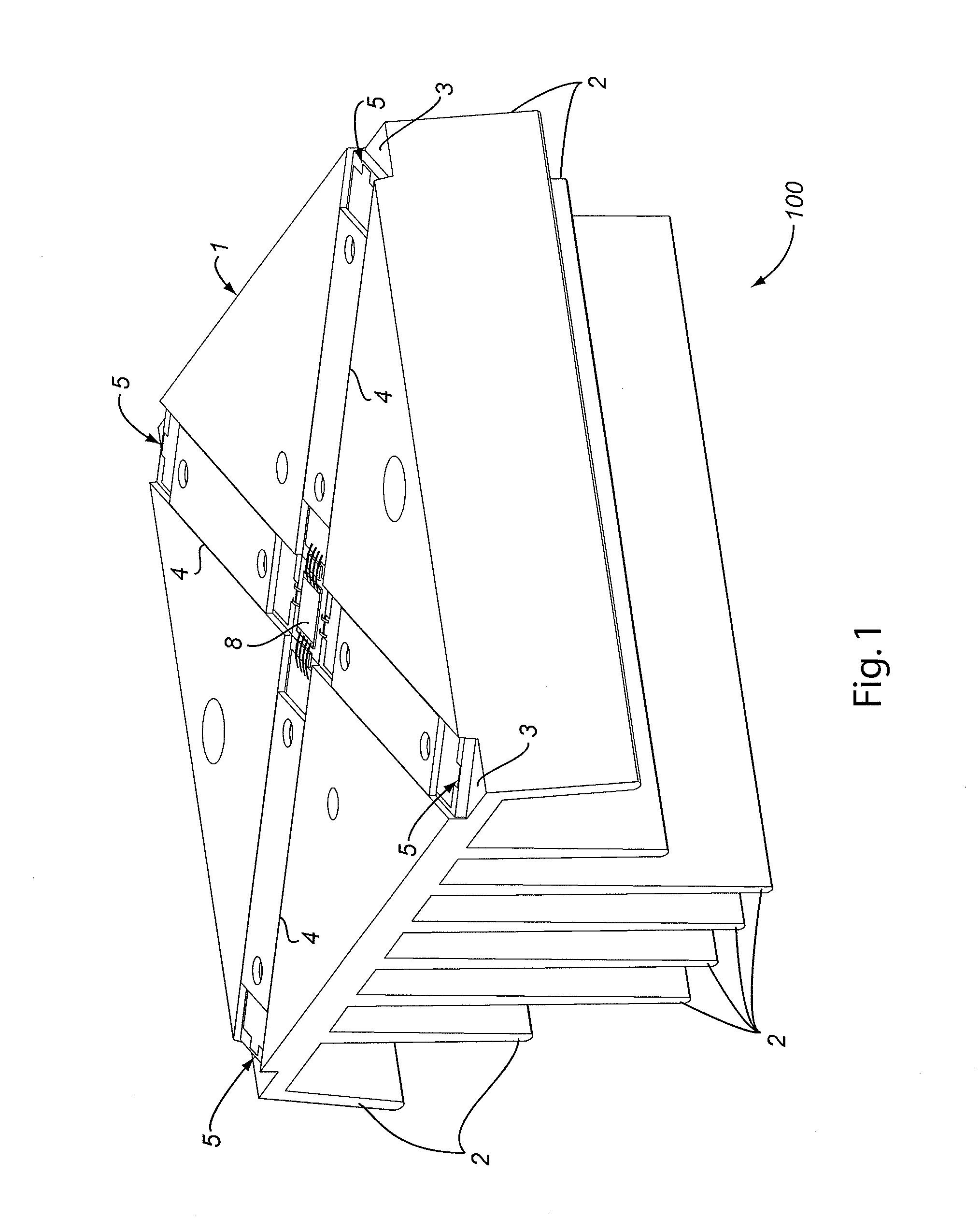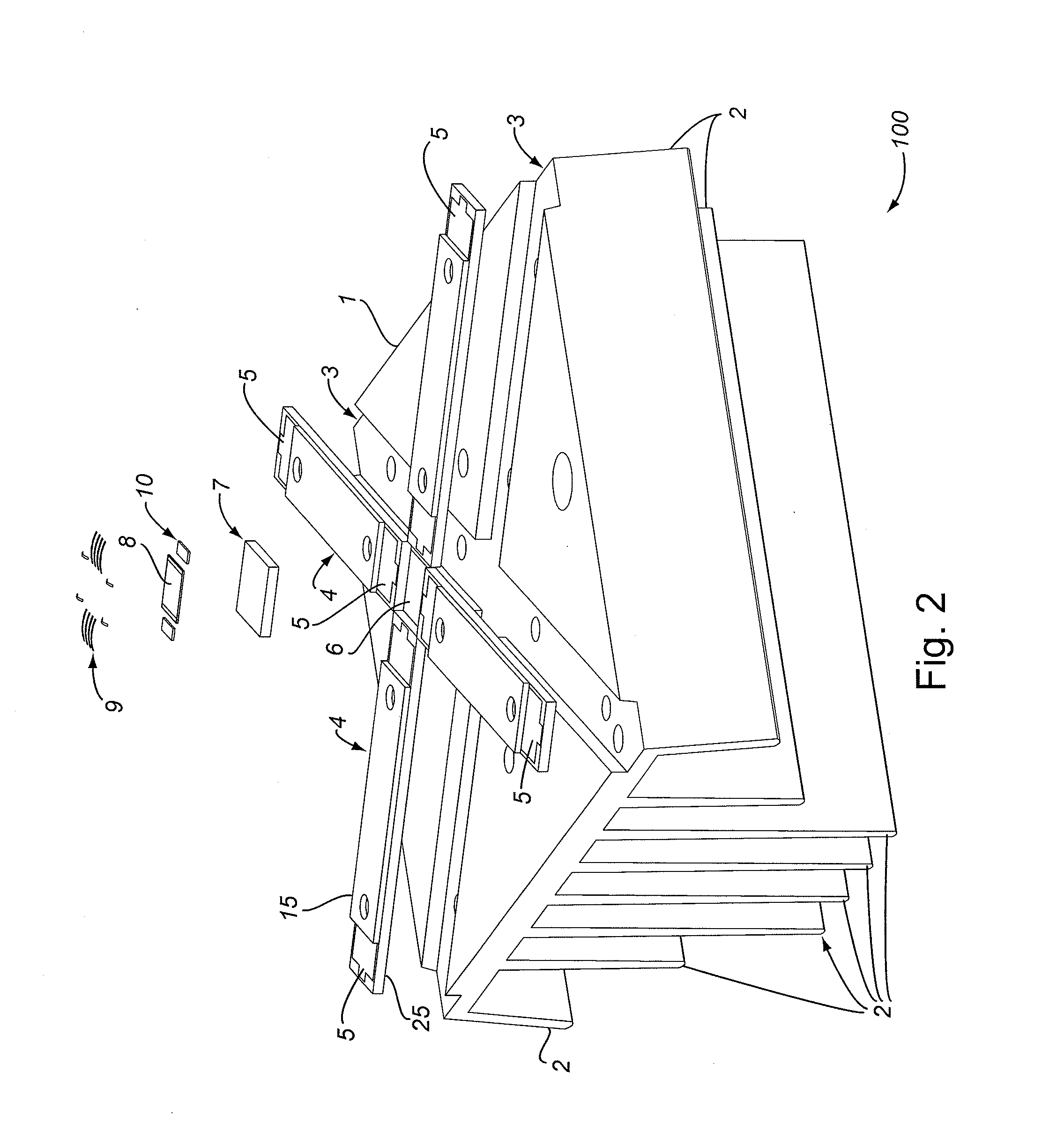Integrated semiconductor solar cell package
a solar cell and integrated technology, applied in the field of semiconductor photovoltaic device packaging, can solve the problems of high mechanical failure rate in actual use, photovoltaic devices, current solar cell package designs, etc., and achieve the effects of less expensive, convenient and convenient manufacturing, and less energy consumption
- Summary
- Abstract
- Description
- Claims
- Application Information
AI Technical Summary
Benefits of technology
Problems solved by technology
Method used
Image
Examples
Embodiment Construction
Substrate Insert Embodiments
[0025]FIG. 1 shows one embodiment of a completed solar cell package assembled from the various stackable components as shown in FIG. 2. The solar cell package includes five components: a multi junction solar chip, bypass diodes, a substrate insert, four conductive laminates, and a heat sink. The solar chip in this embodiment is a III-V multi junction solar cell, but the structure is compatible with other planar chips with any semiconductor material that must be exposed to weather and a wide range of thermal expansion and contraction.
[0026]Referring to FIGS. 2 and 5, the lowest level of the package is a metal base used as a master heat sink 1. The base is preferably aluminum, but any metal or metallic alloy that is machinable or castable will suffice. The base in this embodiment is a modified flat top heat sink with cooling fins of the sort commercially available (e.g., from AAVID Thermalloy LLC of Concord, N.H.). Several cooling fins 2 protrude from the b...
PUM
 Login to View More
Login to View More Abstract
Description
Claims
Application Information
 Login to View More
Login to View More - R&D
- Intellectual Property
- Life Sciences
- Materials
- Tech Scout
- Unparalleled Data Quality
- Higher Quality Content
- 60% Fewer Hallucinations
Browse by: Latest US Patents, China's latest patents, Technical Efficacy Thesaurus, Application Domain, Technology Topic, Popular Technical Reports.
© 2025 PatSnap. All rights reserved.Legal|Privacy policy|Modern Slavery Act Transparency Statement|Sitemap|About US| Contact US: help@patsnap.com



